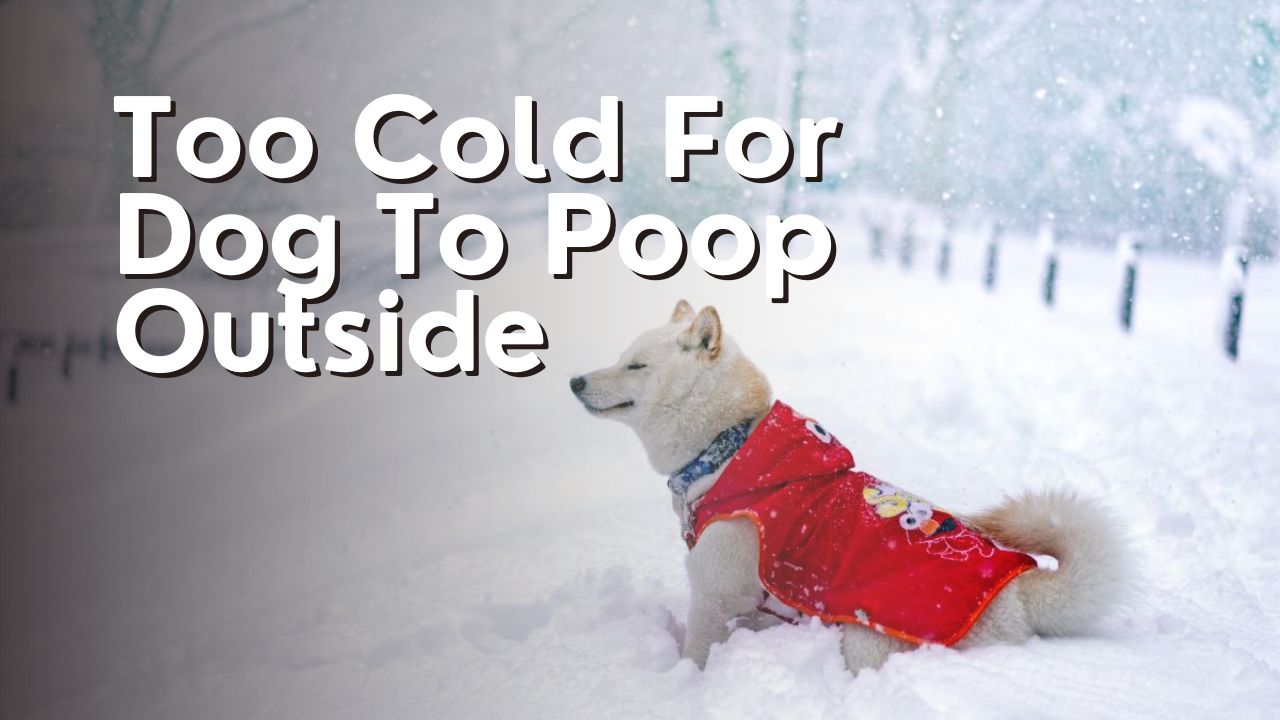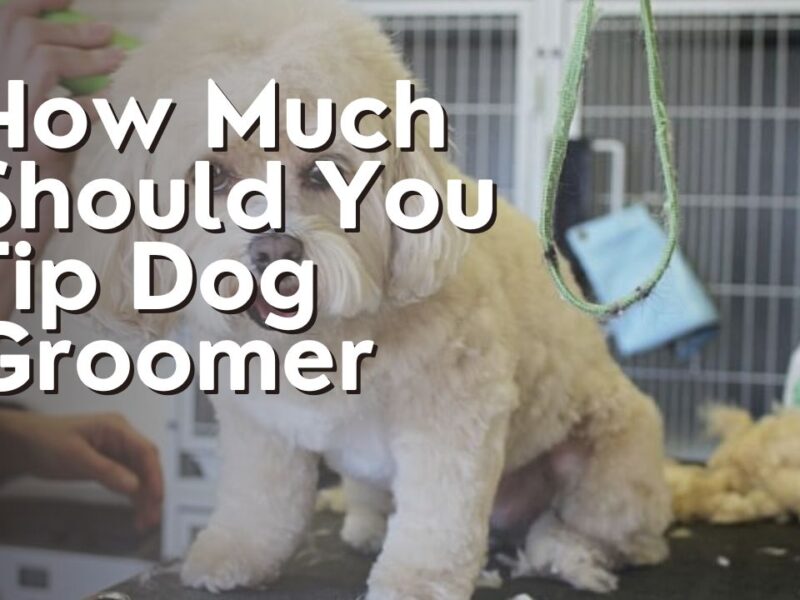Hey there! So, have you ever wondered if it’s too cold for your furry friend to do their business outside? Well, I’ve got some helpful tips for you.
As a dog owner myself, I understand the struggle of dealing with freezing temperatures and trying to make sure our pups are comfortable. In this article, we’ll explore how to gauge your dog’s tolerance to the cold, create a warm outdoor space for them, and even consider alternative options for bathroom needs.
By understanding your dog’s breed and their specific needs, you can ensure that they stay cozy and safe during those chilly winter months. So, let’s dive in and discover how to keep our four-legged friends happy even when it’s too cold for them to poop outside!
Understand Your Dog’s Breed and Tolerance to Cold Temperatures
To provide the best care and make informed decisions about when it’s too cold for your dog to poop outside, it’s important to understand their breed and tolerance to cold temperatures. Every dog breed is different and some are more suited to cold weather than others. For example, breeds like Huskies and Malamutes have thick, double coats that provide excellent insulation against the cold. These dogs are built to withstand freezing temperatures and can handle colder conditions without any issues.
On the other hand, smaller breeds with shorter coats, such as Chihuahuas or Greyhounds, are much more sensitive to the cold. They lack the insulation that their larger counterparts have, making them more susceptible to frostbite and hypothermia. For these breeds, it’s essential to monitor the temperature and take extra precautions during cold weather.
Age and health can also affect a dog’s tolerance to the cold. Puppies, older dogs, and those with certain medical conditions may be more vulnerable to the cold and should be kept indoors when the temperature drops. It’s crucial to consult with your veterinarian to determine what temperature range is safe for your specific dog breed and individual circumstances.
By understanding your dog’s breed and their tolerance to cold temperatures, you can ensure their well-being and provide the necessary care during colder months. Always prioritize their comfort and safety by keeping them warm and protected when it’s too cold for them to poop outside.

Provide a Warm and Comfortable Outdoor Space for Your Dog
Creating a cozy and inviting outdoor environment ensures your furry friend feels comfortable and content during their bathroom breaks. When it’s too cold for your dog to poop outside, it’s important to provide them with a warm and comfortable space. Here are some tips to create the perfect outdoor area for your pup:
- Shelter: Provide a well-insulated dog house or a covered area where your dog can seek shelter from the cold winds and snow.
- Bedding: Place a soft and warm bed inside the shelter to keep your dog off the cold ground. You can use blankets, pillows, or even heated beds to provide extra warmth.
- Heating: Consider using outdoor heating options like heated pads or heated water bowls to keep your dog warm and hydrated.
- Clothing: Invest in doggie sweaters or jackets to help keep your dog’s body temperature regulated during potty breaks.
Remember, every dog is different, and their tolerance to cold temperatures may vary. Observe your dog’s behavior and make adjustments accordingly. By creating a warm and comfortable outdoor space, you can ensure your dog stays happy and healthy even when it’s too cold to poop outside.
| Pros | Cons |
|---|---|
| Provides warmth and comfort | Requires additional maintenance |
| Protects against harsh weather conditions | May not be suitable for all dogs |
| Helps regulate body temperature | Can be costly to set up |
Use Protective Gear to Keep Your Dog Warm
Stay ahead of the weather by outfitting your pup with protective gear to keep them warm and cozy during outdoor adventures. Here are four essential items that can help keep your furry friend comfortable in chilly temperatures:
- Doggie Boots: Dogs can suffer from frostbite or injured paws due to cold surfaces. Invest in a pair of dog boots to protect their sensitive paws from ice, snow, and salt. Not only will they keep your pup’s feet warm, but they’ll also provide better traction on slippery surfaces.
- Insulated Dog Jacket: A well-fitting insulated jacket can make a significant difference in your dog’s comfort level during winter walks. Look for a jacket that is waterproof, windproof, and has a warm lining to keep your pup’s body heat in and the cold air out.
- Doggie Hat or Hood: Ears are particularly vulnerable to frostbite. Consider getting a hat or hood that covers your dog’s ears to provide extra warmth and protection. It will also keep their head cozy and shield their eyes from snow or sleet.
- Paw Balm: Cold weather can dry out your dog’s paws and cause cracking. Apply a paw balm before going out to help moisturize and protect their paw pads. This will prevent discomfort and potential injuries.
By using these protective gear items, you can ensure that your dog stays warm and safe when they need to go outside, making their outdoor experience much more enjoyable.
Adjust Your Dog’s Feeding and Bathroom Schedule
To ensure your furry friend remains comfortable during the winter months, it’s important to make necessary adjustments to their feeding and bathroom routine. Just like humans, dogs have different needs when it comes to food and bathroom breaks in cold weather. Here are some tips to help you adjust your dog’s schedule:
| Feeding Schedule | Bathroom Schedule |
|---|---|
| Feed your dog smaller meals throughout the day instead of one large meal. This will help keep their metabolism up and generate more body heat. | Take your dog outside for shorter, more frequent bathroom breaks. The cold weather can make it harder for them to relieve themselves, so giving them more opportunities will help. |
| Make sure your dog has access to fresh water at all times. Hydration is important, especially in the winter when the air is dry. | When your dog does go outside, make sure they have a warm and dry place to do their business. Clear away any snow or ice to make it more comfortable for them. |
| Consider adding some warm water or broth to their food. This will not only provide extra hydration, but also warmth. | After your dog comes back inside, dry them off thoroughly to prevent them from getting cold and uncomfortable. |
| Talk to your veterinarian about any specific dietary needs or concerns your dog may have during the winter months. They can provide guidance based on your dog’s age, breed, and health condition. | Keep an eye out for any signs of discomfort or distress during bathroom breaks. If your dog seems to be struggling or taking longer than usual, it may be a sign that they need to go inside and warm up. |
By making these adjustments to your dog’s feeding and bathroom schedule, you can help ensure that they stay comfortable and healthy, even in the cold weather. Remember, always prioritize your dog’s well-being and consult with a veterinarian if you have any concerns.

Consider Indoor Alternatives for Bathroom Needs
Instead of relying solely on outdoor bathroom breaks, I can explore indoor alternatives to meet my furry friend’s needs during the winter months.
When it’s too cold for my dog to poop outside, I can set up a designated indoor area for him to do his business. One option is to use puppy pads or doggy diapers. Puppy pads are absorbent mats that can be placed in a specific area of the house, while doggy diapers are like regular diapers but designed for dogs. Both options are convenient and easy to clean up.
Another alternative is to create a litter box for my dog. This works well for small dogs or those that are trained to use litter boxes. I can use a shallow box filled with cat litter and encourage my dog to use it by placing some of his waste in the box.
It’s important to keep the indoor bathroom area clean and regularly change the puppy pads or clean the litter box to maintain a hygienic environment.
With these indoor alternatives, I can ensure that my dog’s bathroom needs are met even when it’s too cold outside.
Frequently Asked Questions
How can I determine if my dog’s breed is more tolerant to cold temperatures?
To determine if my dog’s breed is more tolerant to cold temperatures, I would research the breed’s origin and characteristics. I would also consult with a veterinarian who can provide insights based on their experience with different breeds in varying climates.
What are some ways I can create a warm and comfortable outdoor space for my dog?
I can create a warm and comfortable outdoor space for my dog by providing a cozy dog house with insulated walls and a raised floor, using heated bedding, and ensuring there is plenty of shelter from wind and precipitation.
What types of protective gear can I use to keep my dog warm in cold weather?
I can keep my dog warm in cold weather by using protective gear like a dog sweater or jacket, booties to protect their paws, and a hat or hood to cover their head and ears.
Should I adjust my dog’s feeding schedule during cold weather?
I don’t need to adjust my dog’s feeding schedule during cold weather. However, I may need to monitor their water intake to ensure they stay hydrated and prevent any health issues.
What are some indoor alternatives for my dog’s bathroom needs during cold weather?
Some indoor alternatives for my dog’s bathroom needs during cold weather include using puppy pads, creating a designated indoor potty area with artificial grass, or using a litter box specifically designed for dogs.
Conclusion
In conclusion, it’s important to consider your dog’s breed and tolerance to cold temperatures before expecting them to poop outside in freezing weather.
To make the experience more comfortable for them, you can provide a warm and comfortable outdoor space, use protective gear, and adjust their feeding and bathroom schedule.
However, if the weather is too extreme, it may be necessary to consider indoor alternatives for their bathroom needs.
Ultimately, the main focus should be prioritizing your dog’s health and well-being when it comes to their bathroom routine in cold weather.


